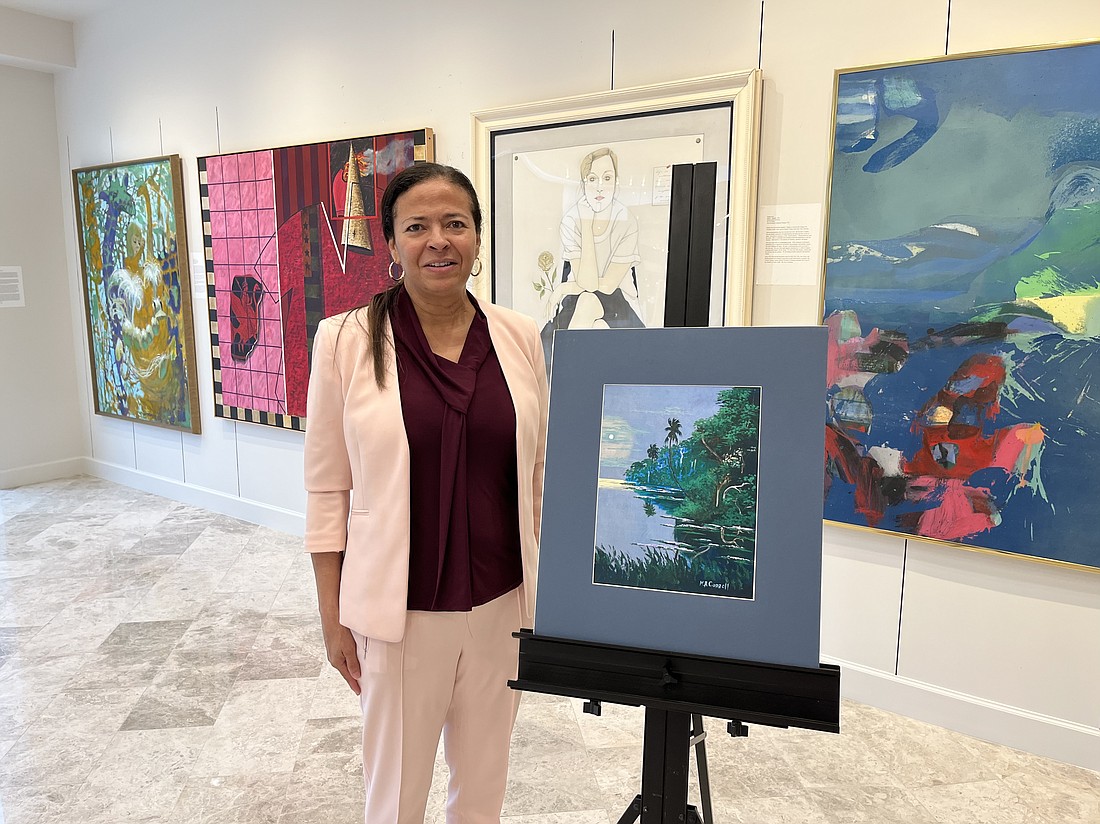- July 14, 2025
-
-
Loading

Loading

Wanda Renee Mills has served in the military and has earned a PhD. She’s a writer, researcher and an educator. But being a consummate professional doesn’t prevent Mills from tearing up as she watches a short documentary about her mother, Mary Ann Carroll.
“Seeing her on the screen and hearing her voice again gets me choked up,” she said.
Carroll, who died in 2019 at the age of 79, was the sole female member of a band of African-American landscape artists known as the Florida Highwaymen. The group was based in the Fort Pierce area.
Mills lives in Sanford but came to Sarasota on March 27 to accept a posthumous award for her mother from Arts Advocates of Sarasota. Because she was the group’s only female member, Carroll has been dubbed the “First Lady” of the Florida Highwaymen.
For years, Carroll and her male colleagues had their paintings sold out of cars beginning in the late 1950s. The future Highwaymen were not allowed to display their work in galleries because of segregation and discrimination. The artists were self-taught and today would be classified as “Outsider Artists.”
Carroll’s family was originally from Wrightsville, Georgia, but moved to Fort Pierce in the 1940s in search of greater economic opportunities. Carroll faced less discrimination in Florida than in her home state, but there were still jobs that African Americans, particularly women, wouldn’t be considered for and places they weren’t allowed to go.
Several of the Highwaymen artists, including Carroll, struggled to keep food on the table and the lights on as they raised their families. All told, Carroll raised seven children on her own following two divorces.
Although she was a prolific painter, Carroll didn’t go knocking on doors in white neighborhoods or stand around parking lots trying to sell her works.
The main salesman for the Highwaymen was Al Black, according to Billy Yaeger’s 2003 documentary, “The Florida Highwaymen.”
In the 1970s, Carroll and her second husband ran a store selling comic books, Jimi Hendrix velvet paintings and magazines, among other items. Upstairs was a studio where Carroll painted. Mills said she remembers hanging out in the store but said it carried merchandise that wasn’t kid-friendly.
After the gallery closed, there were some lean years for Carroll and her kids, who did the best they could to get by.
“I remember when the power company turned off the electricity, Mom went out to the pole and figured out how to turn it back on,” Mills recalls. “She said it would be OK for one night because she would pay the bill the next day.”
Then in 2001, what Mills called the “gold rush” happened. Gary Monroe wrote a book about Carroll and her fellow artists called “The Highwaymen.” Published by the University Press of Florida, the book featured pictures of the paintings. Monroe went on to write books about individual painters, including one on Carroll called “First Lady of the Florida Highwaymen.”
It was Monroe who coined the term “Highwaymen,” Mills said. That title didn’t win favor with Carroll, a deeply religious woman who played the organ at her church and eventually became its pastor.
The term “highwaymen” was originally associated with 19th-century bandits on horseback who robbed travelers. It later became the name of a 1980s country and western supergroup and the title of a film about the two retired Texas Rangers who tracked down bank robbers Bonnie and Clyde.
Despite the unsavory connotation of its title, Monroe’s book gave the African American Florida artists an identity or what today might be called a “brand.” As a result, the value of their works, long dismissed as “motel art,” increased dramatically.
“Suddenly paintings that had sold for $35 were worth thousands of dollars,” Mills told the audience at Arts Advocates in The Crossings at Siesta Key mall. An annual sales event was organized each year on the day the Florida State football team faced off against the University of Florida.
Suddenly rivalries sprung up among the formerly friendly artists, Mills said, although most of them were good-natured. The competition concerned the prices that respective artists were getting in the secondary market for their works, some of which were dug out of garages and attics where they had been languishing for years.
Mills said she was grateful to Monroe for his books because they gave her mother the opportunity to enjoy painting for the first time in her life. “In the early days, she was painting for survival. Later in her life, she could really enjoy her work,” Mills said.
However, some of Carroll’s later work is more rushed than her earlier paintings because she realized “time was running out,” Mills noted.
During her talk, Mills remembered her mother as a fiercely independent woman who “could do anything,” from sewing on a button to fixing a car.
Among Carroll’s children, Mills has emerged as the guardian of her mother’s legacy. She has a hectic speaking schedule, particularly during Black History Month in February and Women’s History Month in March.
An exhibition of two dozen Florida Highwaymen paintings on loan from Vero Beach collector Roger Lightle is currently on display at Sarasota City Hall at 1565 First Street. Lightle has acquired 650 of the Highwaymen works over the years.
In addition to finishing a book that her mother started about her life, Mills is working with film producers on a Netflix feature about Mary Ann Carroll. Originally, it was going to be a movie, but it’s being reframed as a series, Mills said..
It seems everybody wants a piece of Mary Ann Carroll and the Florida Highwaymen these days. But Mills is determined to control the narrative and tell the sometimes bitter truth about her mother’s story.